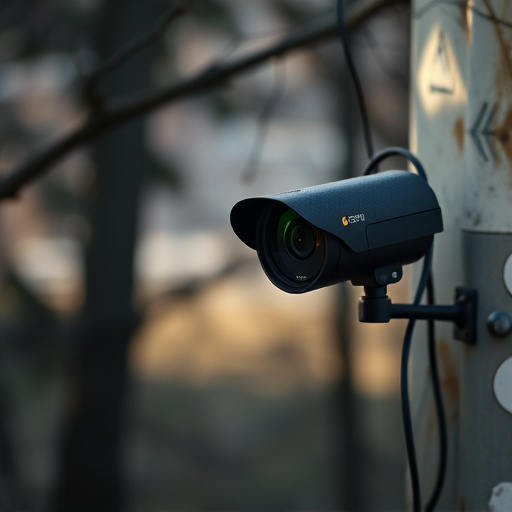In nighttime surveillance, "glint" from external light sources severely hinders camera clarity, especially in remote viewing applications like nanny cameras. To improve performance, a revolutionary technology called Camera Lens Glint Detection uses advanced algorithms to identify and mitigate glints, providing clearer video feeds. This is particularly beneficial for urban areas with vibrant nightlife, ensuring discreet and continuous monitoring without drawing attention. By leveraging strategic camera positioning, infrared technology, and motion detection, remote viewing nanny surveillance systems offer unprecedented clarity and reliability, enhancing safety while protecting privacy.
In the realm of nighttime surveillance, understanding camera lens glint is crucial for enhancing security. This article explores techniques to mitigate its impact, focusing on a revolutionary approach using remote viewing methods. Traditional systems often fall short in low-light conditions, but a cutting-edge method involving advanced lens glint detection promises to transform remote nanny surveillance. We’ll delve into the science behind it, compare traditional with modern techniques, and provide best practices for implementing this game-changing technology in your Remote Viewing Nanny Surveillance System.
- Understanding Glint and its Impact on Nighttime Surveillance
- Traditional Methods vs. Remote Viewing Techniques
- Camera Lens Glint Detection: A Revolutionary Approach for Nanny Surveillance Systems
- Implementing the System: Tips and Best Practices for Effective Night-Time Monitoring
Understanding Glint and its Impact on Nighttime Surveillance
Glint, in the context of nighttime surveillance, refers to the reflective highlights captured by a camera lens, often caused by light sources such as streetlamps or distant buildings. During remote viewing, these glints can significantly impact the quality and clarity of footage, especially when utilizing a nanny surveillance system designed for night-time use. In low-light conditions, glint can appear as bright spots or even obscure essential details, making it challenging to monitor activities accurately.
For remote viewing applications like nanny surveillance, detecting and mitigating glint is crucial. Effective methods are necessary to enhance the overall performance of nighttime imaging systems. By understanding how glint affects visual data, developers and users of Remote Viewing Nanny Surveillance Systems can implement strategies to minimize its impact, ensuring clearer and more reliable footage during nocturnal operations.
Traditional Methods vs. Remote Viewing Techniques
In the realm of night-time surveillance, traditional methods often involve visible light cameras and manual inspection, which can be limited by factors like darkness and physical accessibility. These conventional techniques may capture static images but struggle with dynamic scenes, making them less effective for monitoring activities that occur primarily after dusk.
Remote viewing techniques, on the other hand, offer a game-changer approach with the advent of advanced technology. A Remote Viewing Nanny Surveillance System leverages specialized equipment and software to detect glints—reflections of light from eyes or objects—even in low-visibility conditions. This method provides a more comprehensive view of an area without requiring direct line-of-sight access, making it ideal for discreet and continuous monitoring, especially in urban settings with bustling streets and vibrant nightlife.
Camera Lens Glint Detection: A Revolutionary Approach for Nanny Surveillance Systems
Camera Lens Glint Detection represents a groundbreaking advancement in remote viewing nanny surveillance systems. By utilizing advanced algorithms and computer vision techniques, this technology identifies and mitigates lens glints—reflections that can obscure or distort visual data. In the context of nanny surveillance, where clear and secure video feeds are paramount, glint detection offers unprecedented levels of clarity and peace of mind for parents.
Traditional remote viewing systems often struggle with glare and reflections from windows, lights, or even a caregiver’s glasses, making it challenging to monitor children’s activities accurately. The revolutionary approach of lens glint detection addresses these issues head-on by analyzing video frames in real-time, automatically adjusting for glints, and enhancing visual clarity. This not only improves the overall quality of surveillance but also ensures that every detail is captured clearly, providing a safer and more reliable monitoring experience.
Implementing the System: Tips and Best Practices for Effective Night-Time Monitoring
Implementing a remote viewing nanny surveillance system for night-time monitoring requires careful consideration and best practices to ensure effective and discrete operation. One key aspect is positioning the camera strategically, taking advantage of natural lighting during twilight hours. This can minimize the need for artificial illumination, making it harder for subjects to detect the presence of the lens. Additionally, using infrared technology allows for clear night-time visuals without introducing a noticeable glint or reflection that could alert individuals being watched.
To enhance privacy further, set the camera to activate only when motion is detected, ensuring minimal data collection and reducing the chances of capturing unwanted scenes. Regularly test the system’s range and line of sight, adjusting as needed to maintain optimal performance. Remember that a successful night-time monitoring setup should be virtually invisible, providing clear images without drawing attention, making it an effective tool for remote viewing and nanny surveillance.
The integration of camera lens glint detection technology into nanny surveillance systems represents a significant advancement in remote viewing capabilities. By employing innovative methods to identify and mitigate glint during nighttime monitoring, this approach ensures clearer images and more accurate observations, enhancing the overall effectiveness of remote caregiving oversight. As technology continues to evolve, leveraging these cutting-edge techniques can help provide peace of mind for parents and guardians while fostering a safer environment for children in their care.
